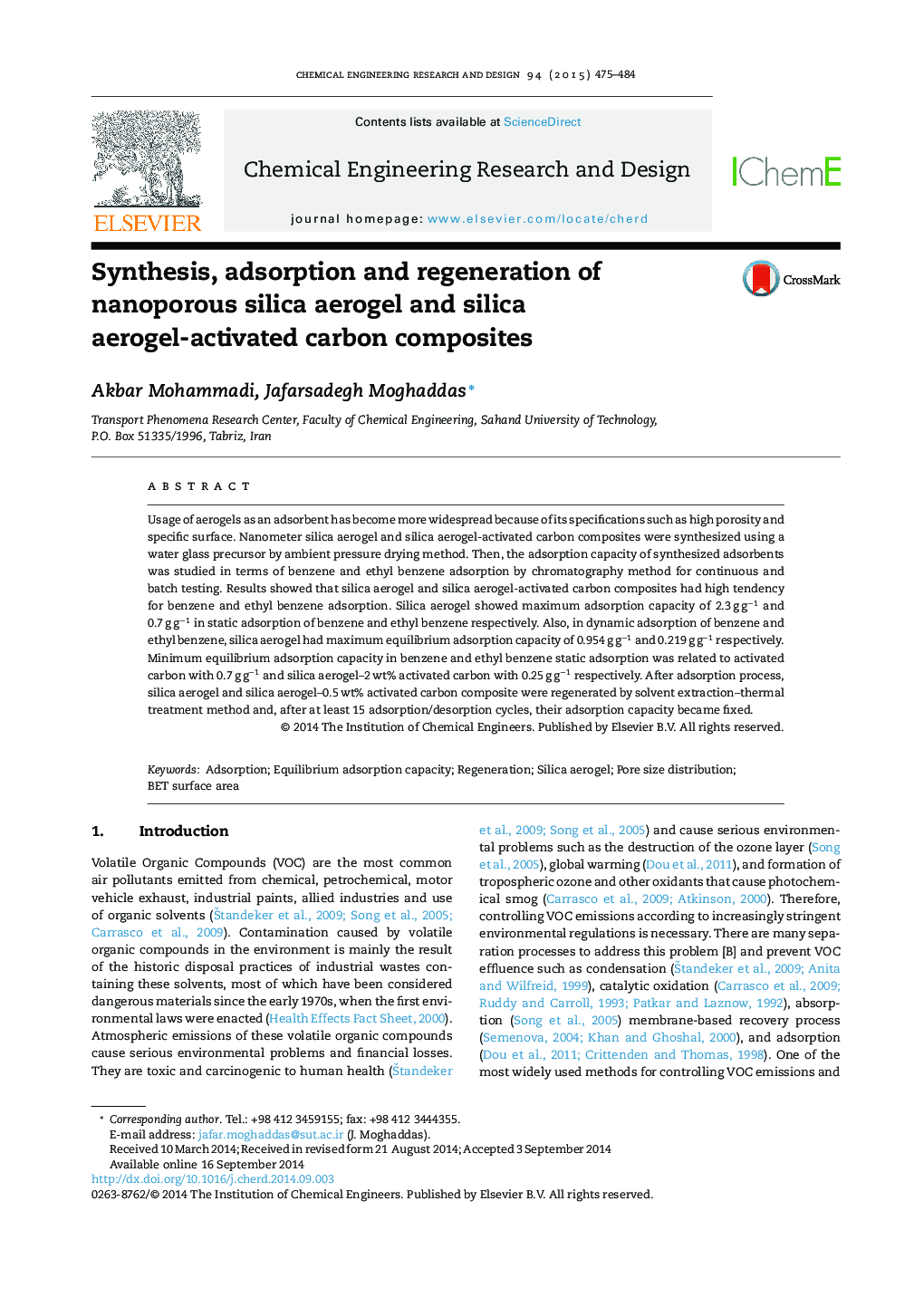| Article ID | Journal | Published Year | Pages | File Type |
|---|---|---|---|---|
| 620497 | Chemical Engineering Research and Design | 2015 | 10 Pages |
Abstract
Usage of aerogels as an adsorbent has become more widespread because of its specifications such as high porosity and specific surface. Nanometer silica aerogel and silica aerogel-activated carbon composites were synthesized using a water glass precursor by ambient pressure drying method. Then, the adsorption capacity of synthesized adsorbents was studied in terms of benzene and ethyl benzene adsorption by chromatography method for continuous and batch testing. Results showed that silica aerogel and silica aerogel-activated carbon composites had high tendency for benzene and ethyl benzene adsorption. Silica aerogel showed maximum adsorption capacity of 2.3 g gâ1 and 0.7 g gâ1 in static adsorption of benzene and ethyl benzene respectively. Also, in dynamic adsorption of benzene and ethyl benzene, silica aerogel had maximum equilibrium adsorption capacity of 0.954 g gâ1 and 0.219 g gâ1 respectively. Minimum equilibrium adsorption capacity in benzene and ethyl benzene static adsorption was related to activated carbon with 0.7 g gâ1 and silica aerogel-2 wt% activated carbon with 0.25 g gâ1 respectively. After adsorption process, silica aerogel and silica aerogel-0.5 wt% activated carbon composite were regenerated by solvent extraction-thermal treatment method and, after at least 15 adsorption/desorption cycles, their adsorption capacity became fixed.
Related Topics
Physical Sciences and Engineering
Chemical Engineering
Filtration and Separation
Authors
Akbar Mohammadi, Jafarsadegh Moghaddas,
